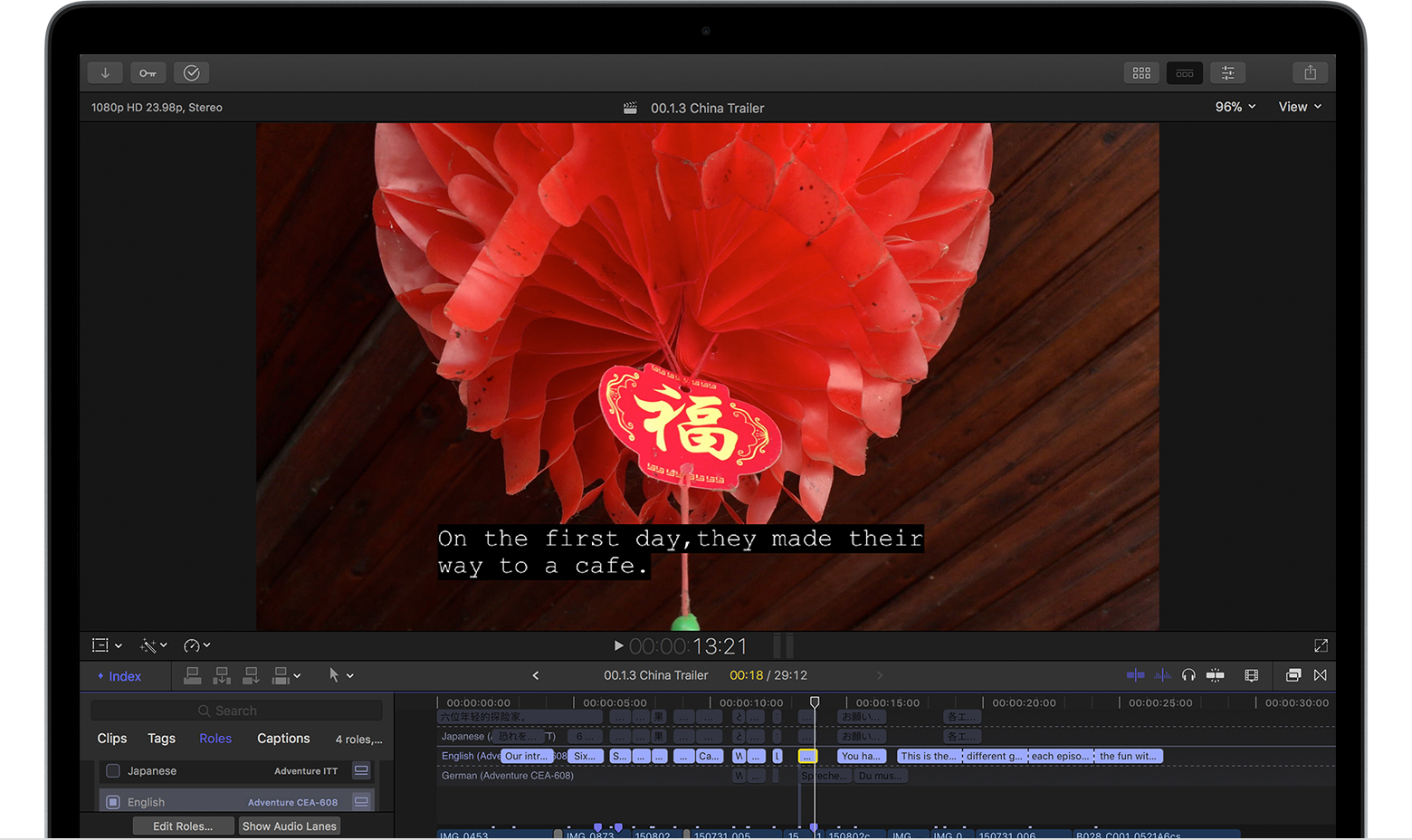

- Final cut pro video formats how to#
- Final cut pro video formats 1080p#
- Final cut pro video formats mp4#
Then, in the ‘Anamorphic Override’ settings change the value to Standard instead of the none or widescreen mode. Solution 2: Another alternate solution to overcome the above problem is that you must disclose the Video inspector in your Final Cut Pro application. Before working on the aspect ratio values, modify the fit to fill settings so that you can crop the unwanted areas in the video frames precisely. When you import the videos for editing, automatically the video would have taken this fit option. Solution 1: In this situation, you must fix the default spatial fit settings to fill the format in the final cut pro app.
Final cut pro video formats how to#
Now that you are well versed in how to export your videos, you are going to need some more footage, music & templates to test out and further develop your video editing skills.Problem: Even after changing the resolution values to 1440 X 1080 using the final cut pro app, the video frame covers the widescreen without modifying the size concerning the assigned values.
Final cut pro video formats 1080p#
Otherwise, 8 megabits per second for 1080p and 4 megabits per second for 720p.
Final cut pro video formats mp4#
These same steps are required if wanting to export Premiere Pro video to MP4 How to export Premiere Pro video for Instagram The new video file will be created, ready to share with the world.

Use this to choose an export location and a name for your new file, and then click Save.


Wanting more of the basics and essential settings when exporting in Premiere Pro? Tuts+ has created this easy to follow tutorial: This is due to the fact that it out[uts each frame individually as a TIFF photo file so you can start back at the frame you encountered the failure. So if you are wanting the highest quality and have time to wait, AVI is your option.Įxporting as a TIFF Sequence is a good option for longer videos as it offers protection against render failure. Commonly used for MP4 or 3GP.īest for exporting with an Alpha Channel as it provides high image fidelity and a reasonable file size.Įxporting as an uncompressed AVI is great for maximising image quality without concern for file size. Exporting for H.264 will render fast and playback smoothly. H.264 is often seen as the best format for online video such as YouTube and Vimeo. From the available options, here are the 4 best formats to export from Premiere Pro when getting started: Right: Premiere Pro Preset Export Options.Įach file format offers different platforms, qualities and file sizes for your video. Left: Premiere Pro Format Export Options.


 0 kommentar(er)
0 kommentar(er)
